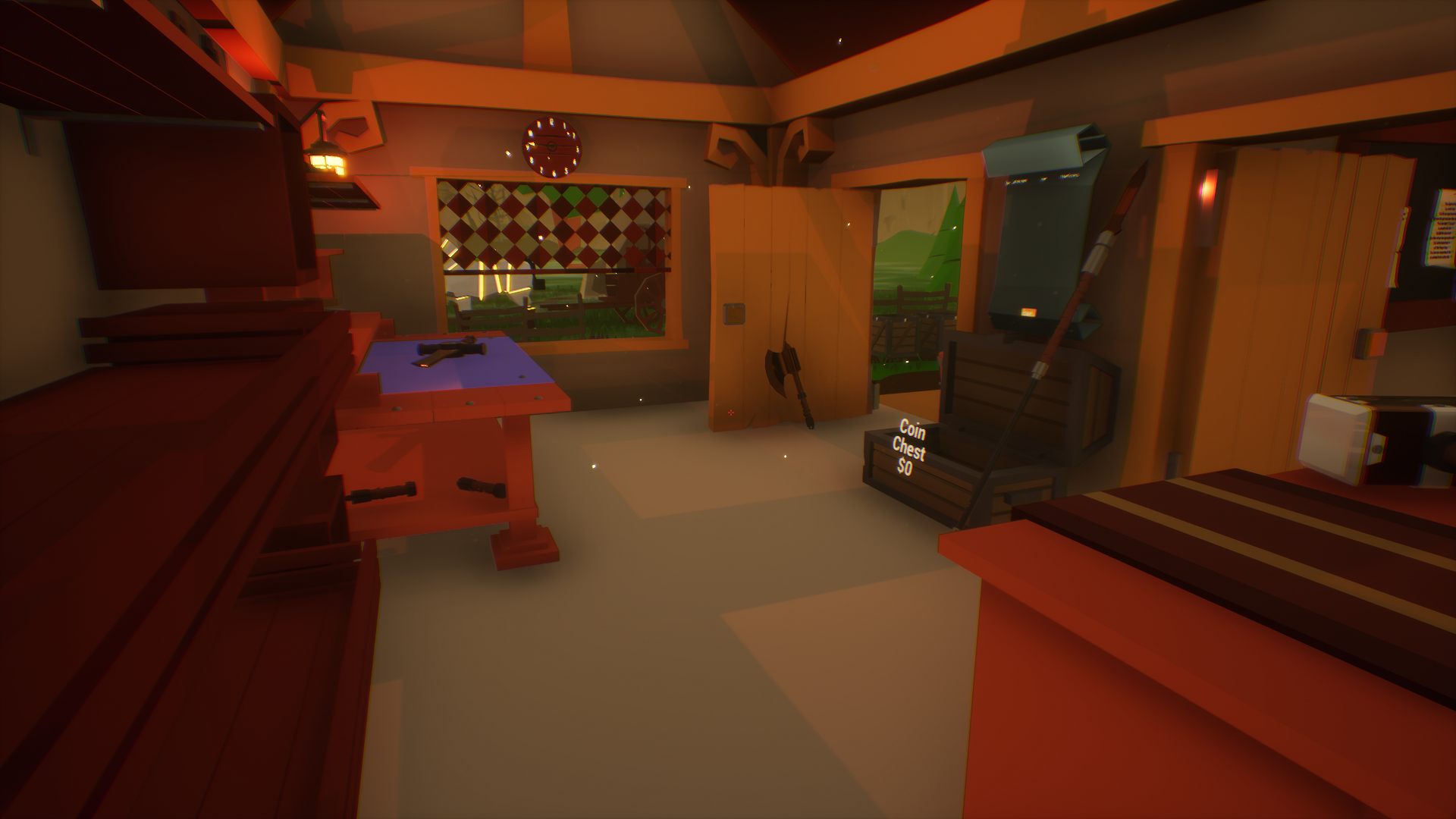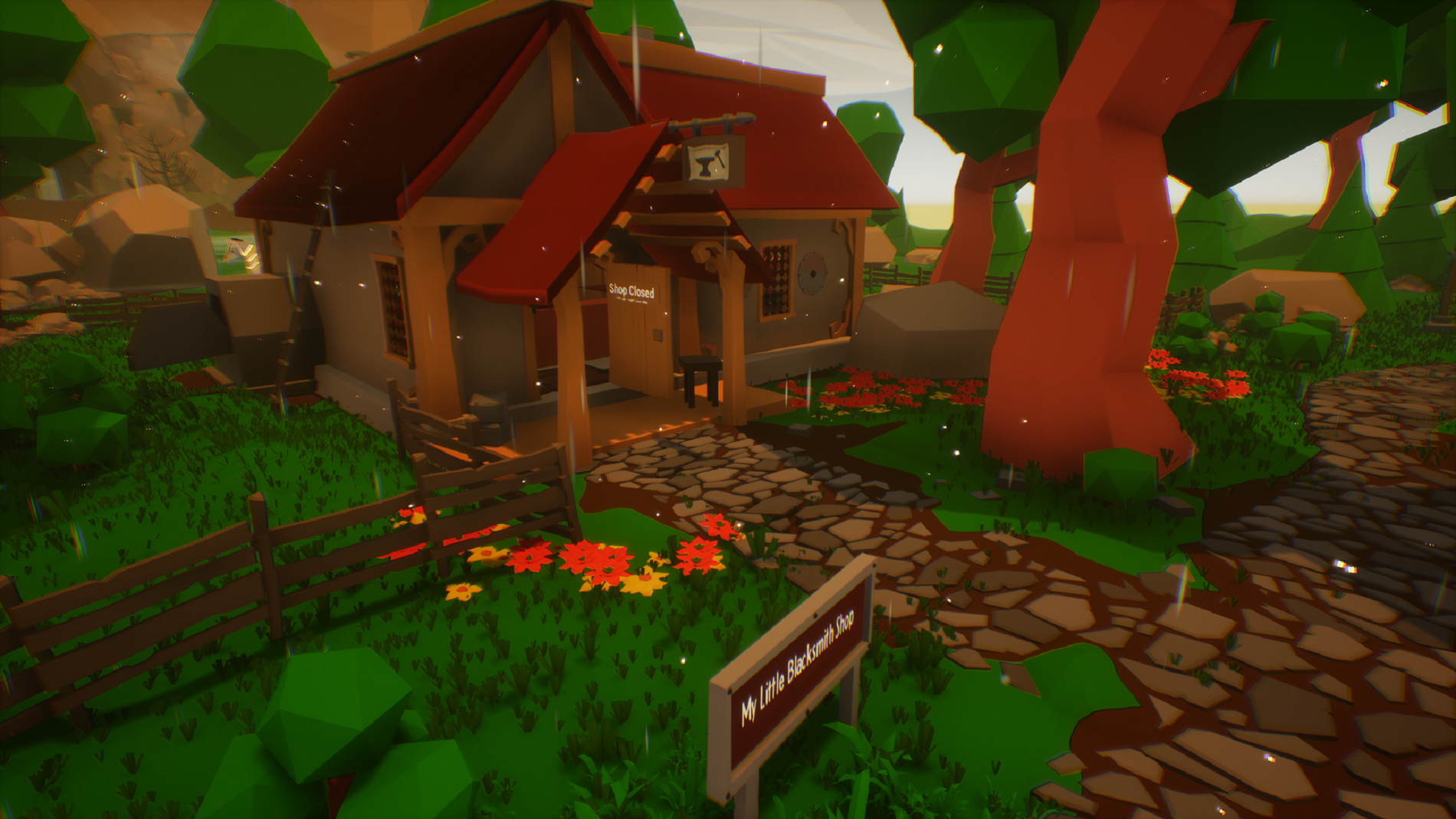My Blacksmith Shop Mac OS
While I do agree that this game should be for Mac I hope you all realize that your macs can run Windows so long as you did not buy a Mac from the stone ages (PowerPC based). It does depend on the mac, but newer macs can run the very latest version of Windows with full driver support using either Bootcamp or VMWare Fusion or Parallels. Do note that Bootcamp is the best method but you have to actually reboot into Windows where-as the other methods let you run Windows in a Virtual Machine but with this method you are sharing resources between the two OSes and thus not good for games unless you have the Mac I have: 2012 12-Core Mac Pro with 64GB RAM, 1TB SSD, 4TB HDD, GTX 680 4GB. So yea my mac can run games in virtual machines rather well but most people that buy macs are stuck with a dual core CPU unless they get a decent iMac or a 15-inch Macbook Pro. You will need to purchase a license for the version of Windows that your mac supports, however if you go to eBay you can buy licenses for Windows 10 Pro or 8.1 Pro all day long for about $6-10. Just note these keys will be tied to your MAC Address (network card, not the actual Mac) and thus if you ever get a new mac you will need a new key as well.
If you have a Mac with a dual core and integrated graphics (13-inch or less laptops, cheap iMacs and Mac Minis fit this bill, also anything with a Core 2 Duo) you will ONLY want to run Bootcamp as I mentioned before. Also note that anything with Intel Iris or even the Air's with Intel HD 5000 should be able to run this game although BARELY since they are integrated solutions but are much newer than the required video cards for this game so they should handle it but not very well. This is what people mean when they say Macs are not for gaming...you bought the wrong mac for sure if you fit in this category.
Apple Bootcamp
If you have a Mac with a Quad Core (or beyond that like me) and Dedicated Graphics such as a nicer iMac or a 15-inch Macbook Pro or a Mac Pro then you have the option to run VMWare Fusion (this is what I prefer) or Parallels (more user friendly and on a Black Friday special; search google for VMWare Fusion if you need more advanced features) and run Windows in a virtual machine which is much more convenient. Also note that 8GB RAM would be bare minimum for this setup and 16GB would be highly recommended so you can dedicate 8GB to each OS. Also note that both of these programs only support DirectX 10 or below so modern titles may or may not work with this solution.
Parallels
Easily check which versions of mac OS, iOS, iPadOS, or watchOS are compatible with your Mac model or iDevice. Guide includes OS X 10.8.x to macOS 11.0.x. Explore the world of Mac. Check out MacBook Pro, MacBook Air, iMac, Mac mini, and more. Visit the Apple site to learn, buy, and get support.
- Rurr Hello everyone! I gave the game a go, a little late perhaps (And I messed up by not knowing how to officially open my shop, DERP! Next episode to fix that) But I hope the one thing the game needs is more filler and reasoning of why to be a shop owner other than to simply progress to the next ingot type, more 'random events' or things that make you have to stop blacksmithing for a bit.
- About This Game My Little Blacksmith Shop is a sandbox blacksmith simulation game where you are tasked with creating weapons for your customers. Mine for ore and refine the ore into ingots.
I am note sure if you can private message someone on this site, but if you can feel free to hit me up if you have any questions about the installation methods. If you cannot private message just reply to my post.
Thank you and have a good day!
This is a series of tips that cover Mac OS X client edition. Server forums cover Mac OS X server on the community.
Here is the series of tips for related Macs. 10.6,10.7, 10.8, 10.9, 10.10,10.11,
10.12 ,10.13, 10.14 Mojave, 10.15 Catalina , 11.0 Big Sur.
See special note about resetting the SMC during updates and upgrades, later in the tip.
is an article I wrote that everyone updating their Mac should read. No update should be ventured into with operating systems or software without first ensuring your data is backed up in two separate places. Slowing down of your Mac should not lead you to assume an update will fix everything. First isolate why your Mac is slowing down or crashing before installing anything new.
Apple includes many full upgrade installer links on https://support.apple.com/en-us/HT211683
Note: APFS came about with High Sierra, and Mojave continues the practice of auto-reformatting drives into APFS that are solid state like flash drives from HFS Journaled. If you need to downgrade to an older system than High Sierra, you will need to reformat the drive again, or leave a partition with the old formatting available.

Apple released for 10.14.6 users, 2020-003 Mojave security update. If running an earlier version of 10.14, run the 10.14.6 Combo update first.
Apple recommends you have these Macs according to: https://support.apple.com/kb/SP777?locale=en_US
- MacBook (Early 2015 or newer) [model identifier 8,1 or later]
- MacBook Air (Mid 2012 or newer) [model identifier 5,1 or later]
- MacBook Pro (Mid 2012 or newer) [model identifier 9,1 or later]
- Mac mini (Late 2012 or newer) [model identifier 6,1 or later]
- iMac (Late 2012 or newer) [model identifier 12,1 or later]
- Mac Pro (Late 2013; Mid 2010 and Mid 2012 models with recommended Metal-capable graphics cards) [model identifier 5,1 or later]
bracketed items in quotes were added for additional identification purposes. Your Apple menu -> About This Mac -> System Report or System Profiler gives you the model identifier.
All of the Macs that are older than 10.11, need to be updated to 10.11 first before installing Mojave.
The oldest MacBook Air, Mac mini, and iMac which can upgrade to Mojave shipped with 10.8, Mountain Lion.
The oldest MacBook Pro which can upgrade to Mojave shipped with 10.7, Lion.
The oldest MacBook had Mac OS X 10.10 installed.

The oldest Mac Pro on the list above with the compatible graphics cards, had 10.6 originally installed, and is the only Mac that shipped with 10.6 that can install Mojave. Before upgrading to 10.7 or later, read this tip as Apple has not reintroduced a series of software that made older Mac compatible software compatible with Intel Macs since 10.6.8's release.
Apple released Mojave on September 24, 2018. Reports from:
My Blacksmith Shop Mac Os 11
earlier than that date were made with pre-release Mojave versions and can not be relied upon.
September 30, 2018 driver additions from third party update pages:
HP, and Samsung (HP has become the download site for at least some Mojave Samsung printers, if you have Samsung see if any are Catalina compatible)
Silverfast.
10.14.3 was released January 22, 2019. Note, some users are reporting 10.14.3 will not successfully apply as an update without an SMC reset as described how to do in this link: https://support.apple.com/en-us/HT201295
Frequently both updates and upgrades will require multiple reboots to successfully apply. Do NOT become impatient if you find the screen go blank during the update or upgrade process. If you press the power button to shut it down while it is rebooting for the update or upgrade, it may quit the process, and leave you stuck.
Use the macOS Mojave forum for operating system specific questions of other end users such as yourself.
Note: https://support.apple.com/guide/disk-utility/partition-a-physical-disk-dskutl14027/mac
are directions for creating a separate partition that will allow you to dual boot into an older operating system
if you find something not compatible with the current. Once you install the older operating system, you can use the Startup manager to dual boot to the older system.
You can't install Mojave from the Finder, unless you are running 10.13.6 or earlier.
The direct download link for Mojave is:
Note: some people have had trouble downloading the latest Mojave links. https://brave.com/ has been found to be a better web browser than some if you run into issues and is known to work on Mac OS X 10.10 and later.
The SD card reader in the MacBook Pro 13' early 2015 no longer reads directly in the Finder under Mojave with a card formatted under a Panasonic FZ80. I found I could use the application Image Capture to read the card. What happens in the Finder, is instead of a generic floppy disk icon, I get a generic document icon. At least Image Capture is a work around.
Note: the 2020-004 security update for Mojave has a bug with the screen saver getting stuck. To repair delays in the screen saver, 'The workaround is to choose a non-picture screen saver such as Flurry, Message, etc.' (special thanks to community member dialabrain for this report.